Abstract
A comprehensive microbiological quality assessment scheme for the benefit of all clinical microbiological laboratories in the United Kingdom was established in 1974. The main emphasis of the scheme has been on the supply of simulated clinical material for proficiency testing. Of 494 laboratories currently participating in the scheme, 84 are abroad and over 500 specimens have been distributed between 1974 and 1980. A wide variety of specimens are issued. These include specimens for: general bacteriology including isolation, sensitivity testing and serology; mycobacterial bacteriology; syphilis serology; virus isolation; general viral serology; rubella serology; hepatitis B antigen detection; electron microscopy; mycology; parasitology; antibiotic assay; public health specimens including milk and water. Laboratories are requested to examine the specimens using their routine procedures and report their results to the Microbiological Quality Control Laboratory (MQCL). The reports are analysed at MQCL and the summarised results of each distribution are sent to all participants. Each participant receives details of his individual performance on current specimens and an analysis of the previous 6 months, cumulative performance. The performance of all laboratories is reviewed twice yearly and laboratories with results significantly worse than those of their peers are offered the opportunity to seek advice and help from a National Advisory Panel of their professional colleagues. The Scheme is confidential and its main role is educational.
Full text
PDF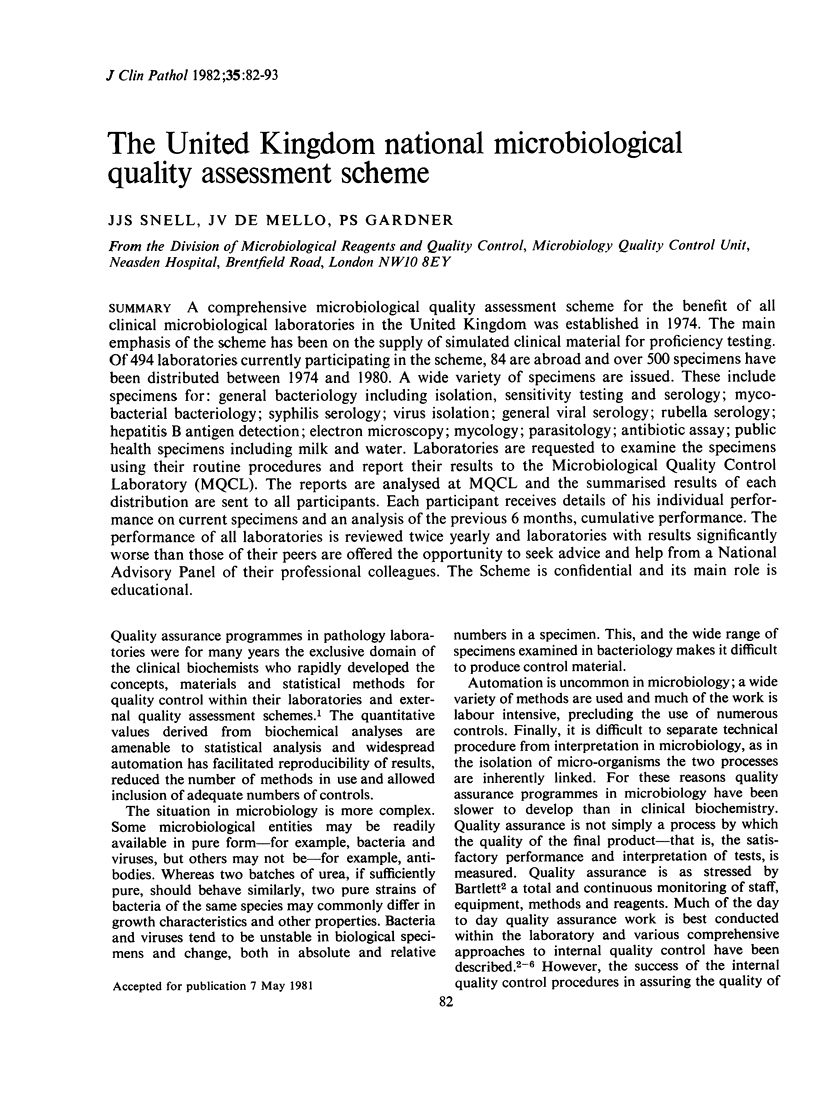
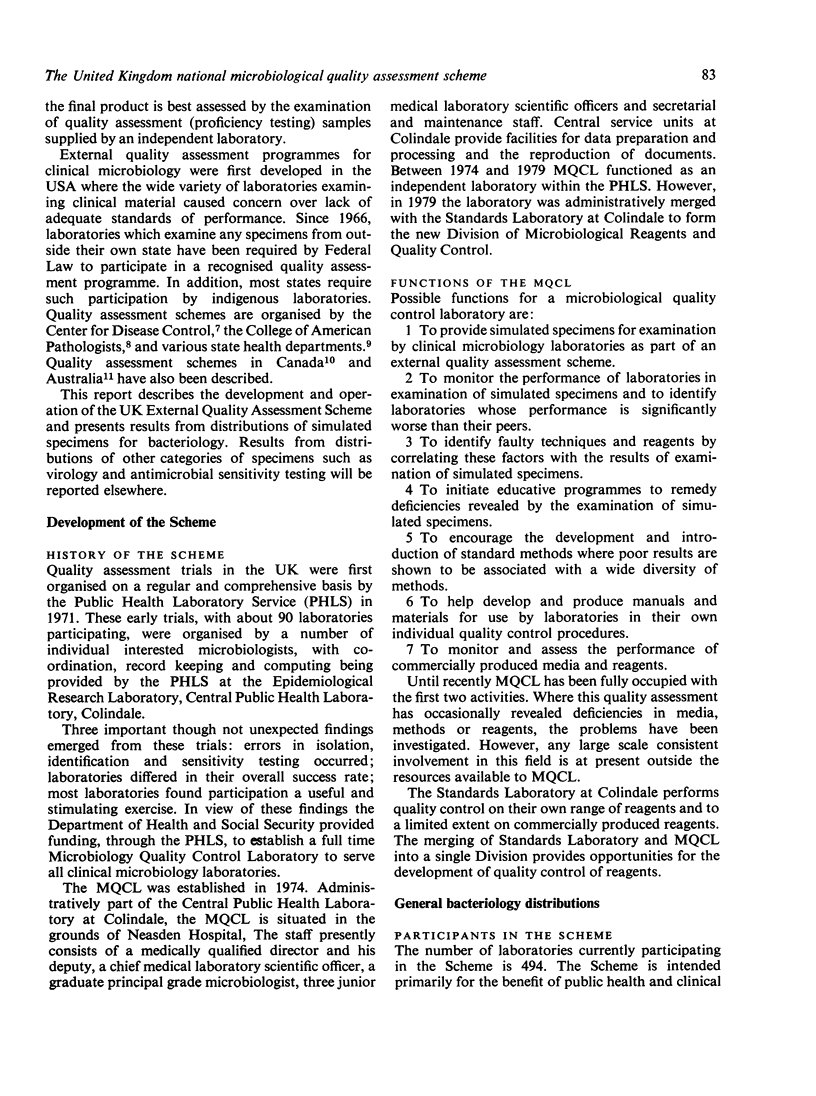
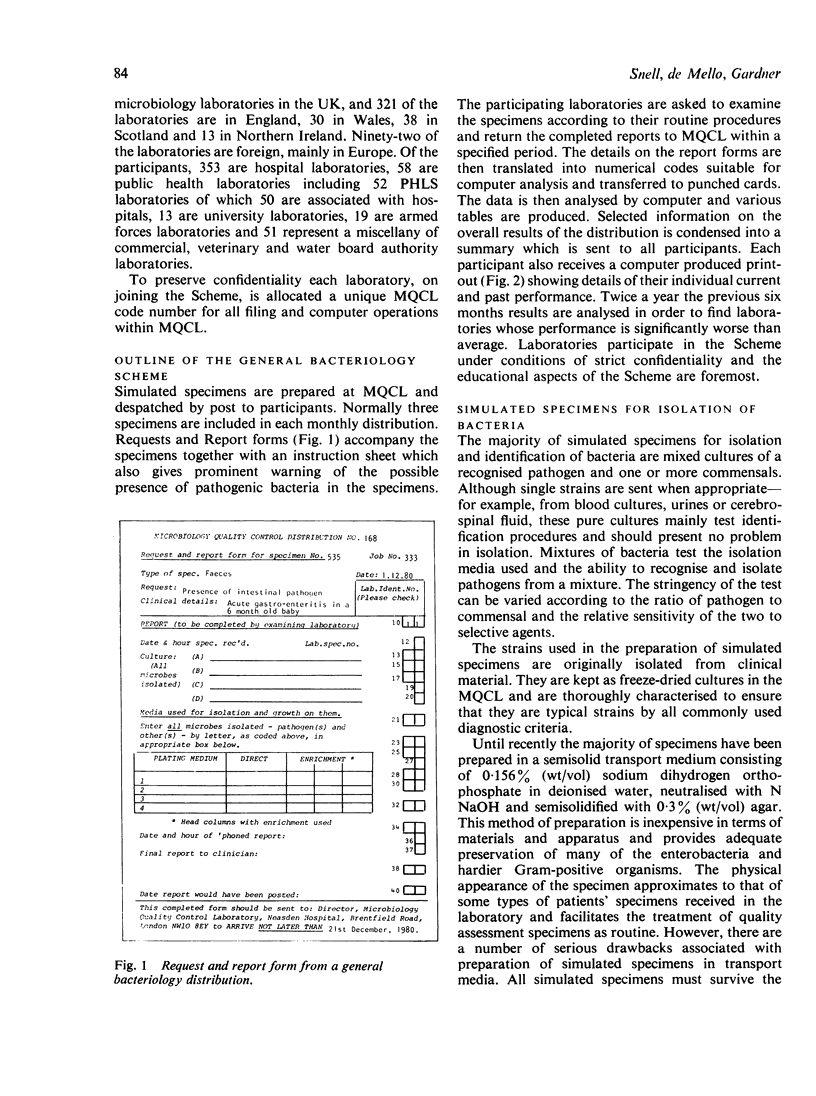
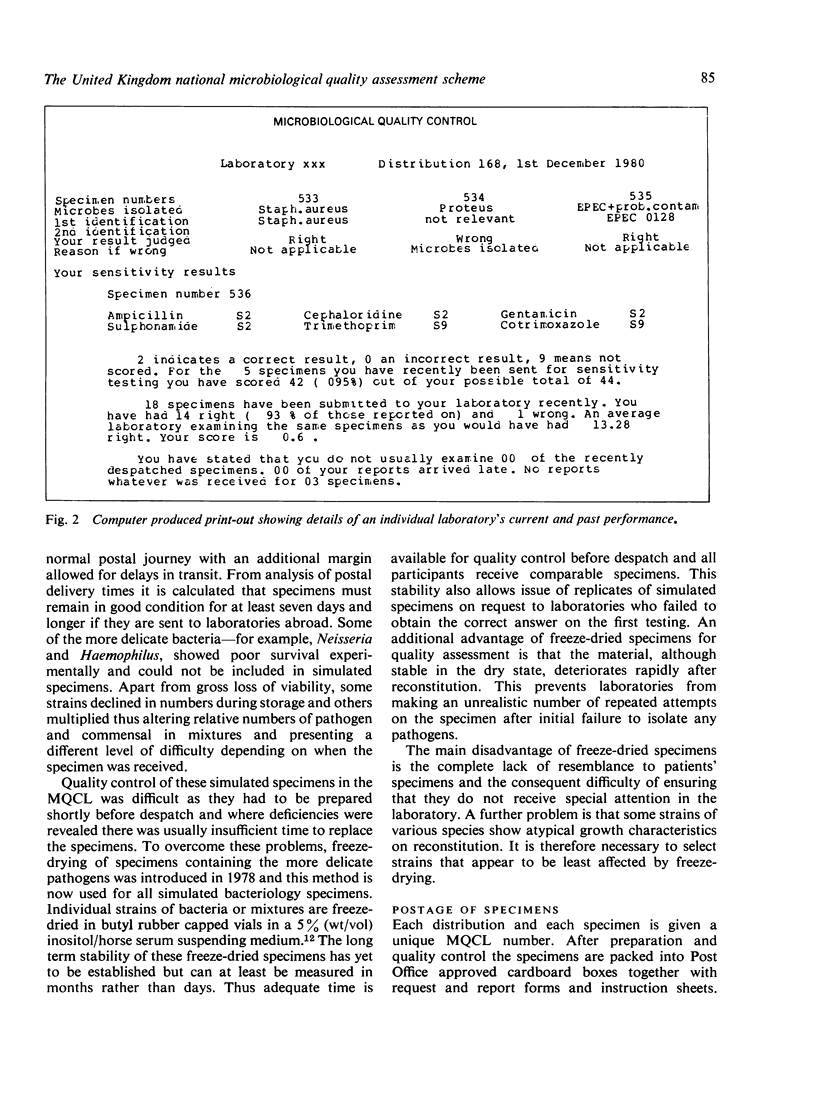
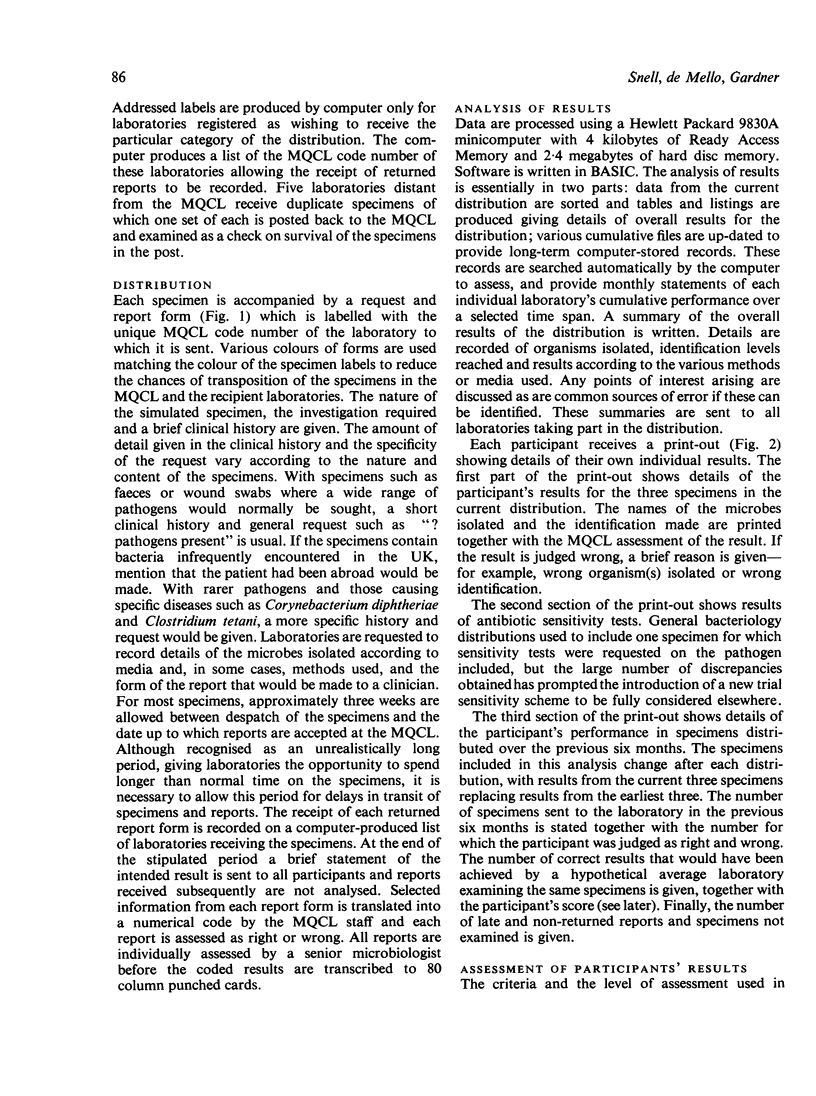
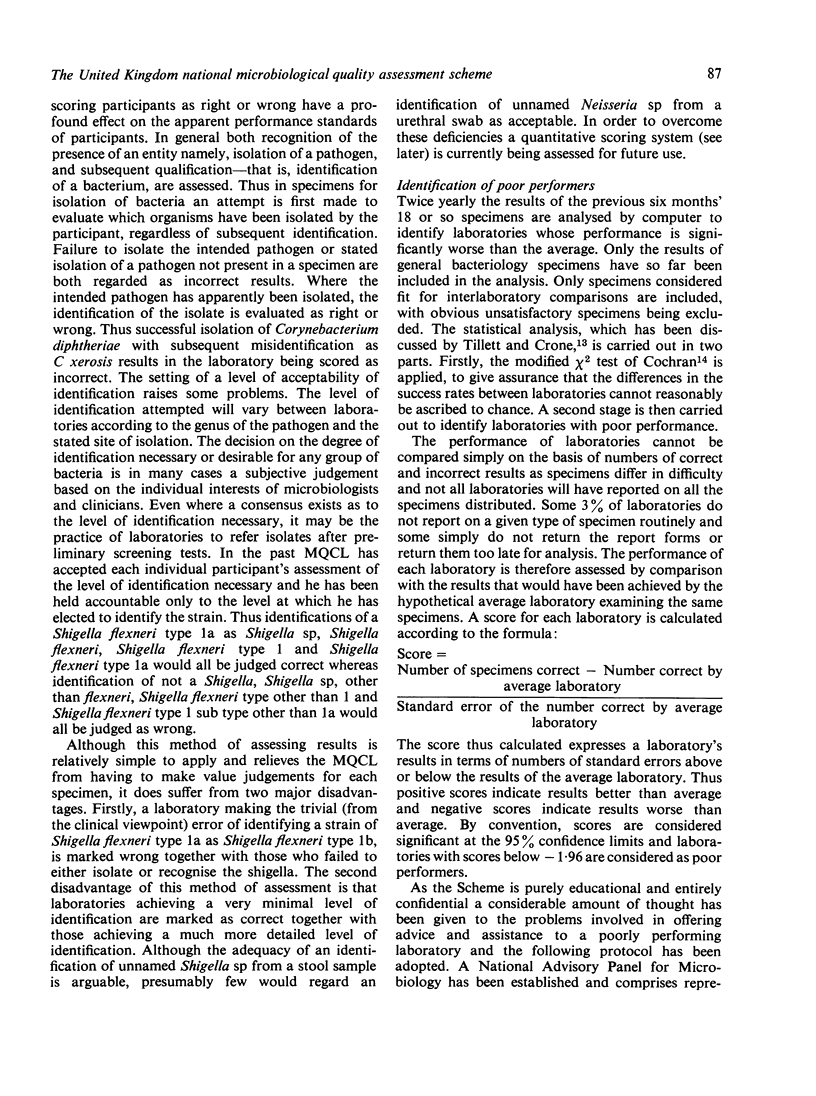
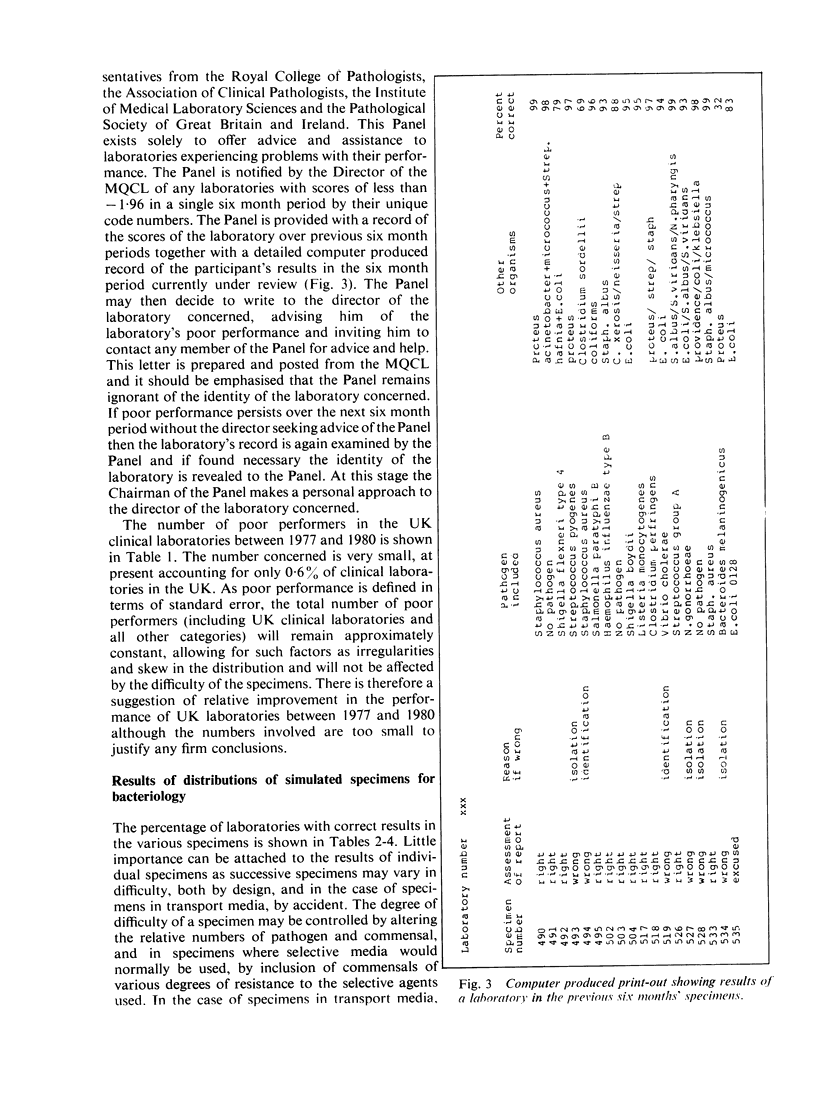
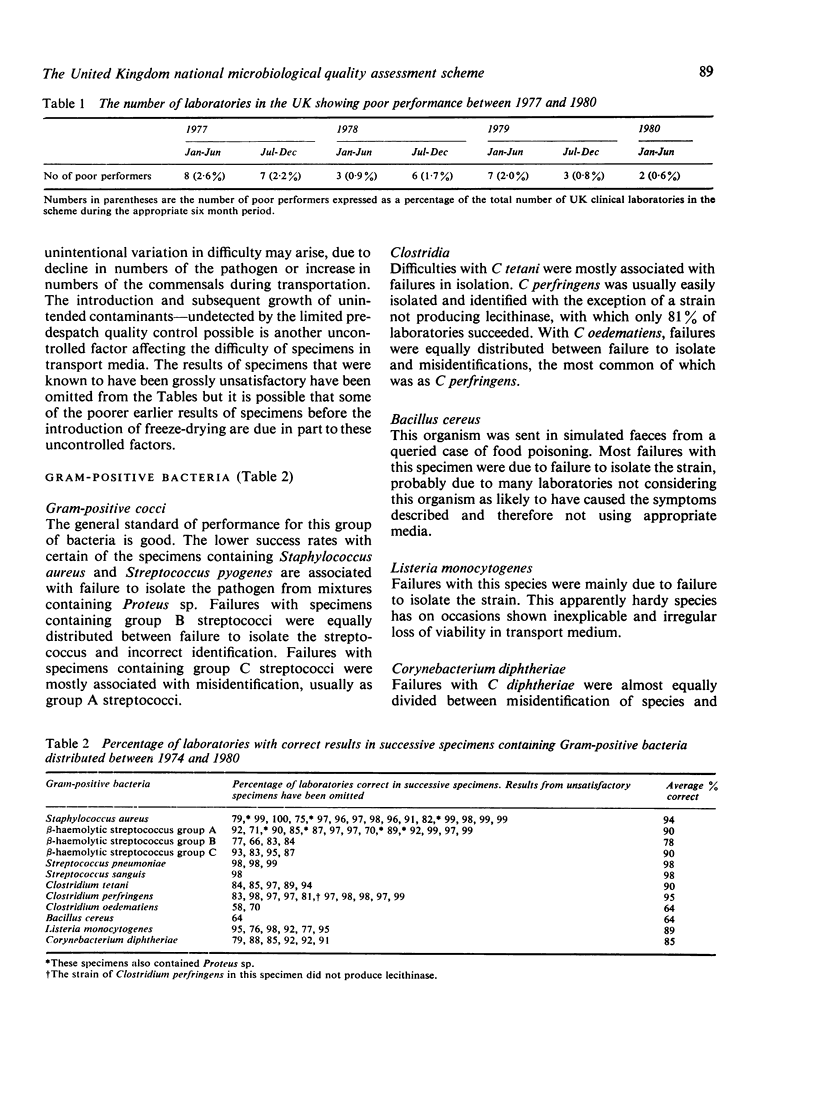
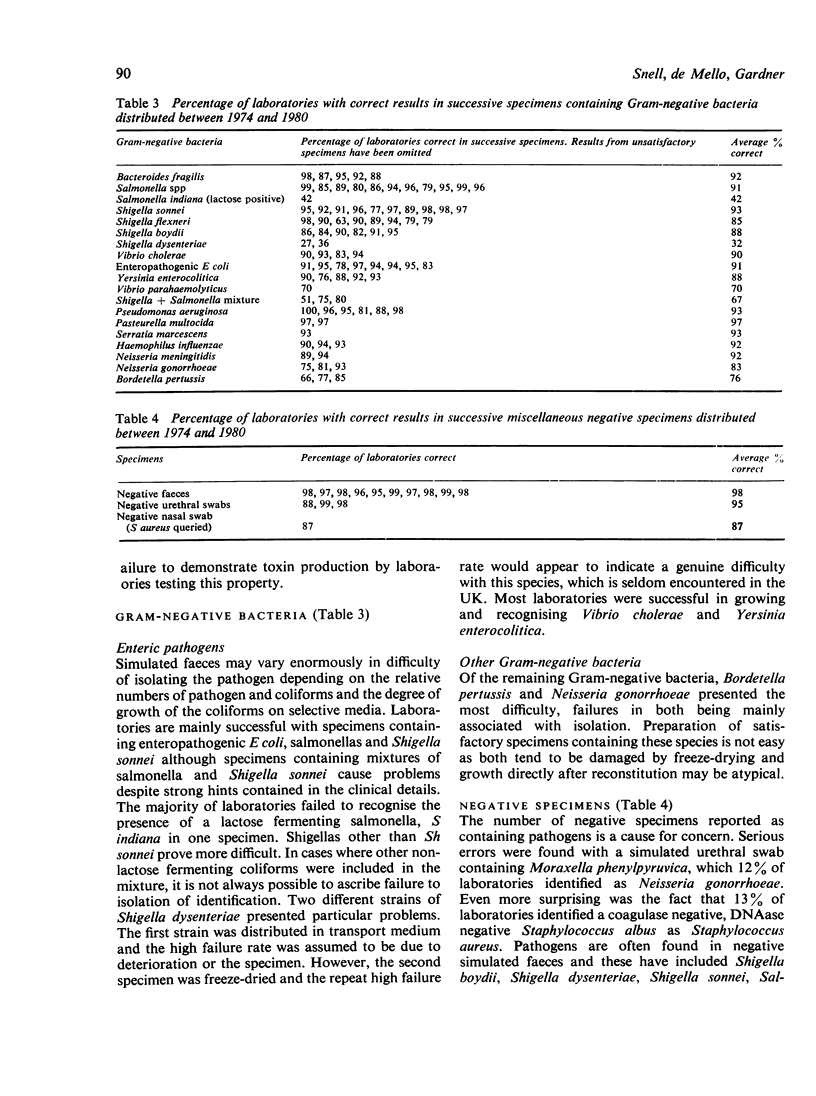
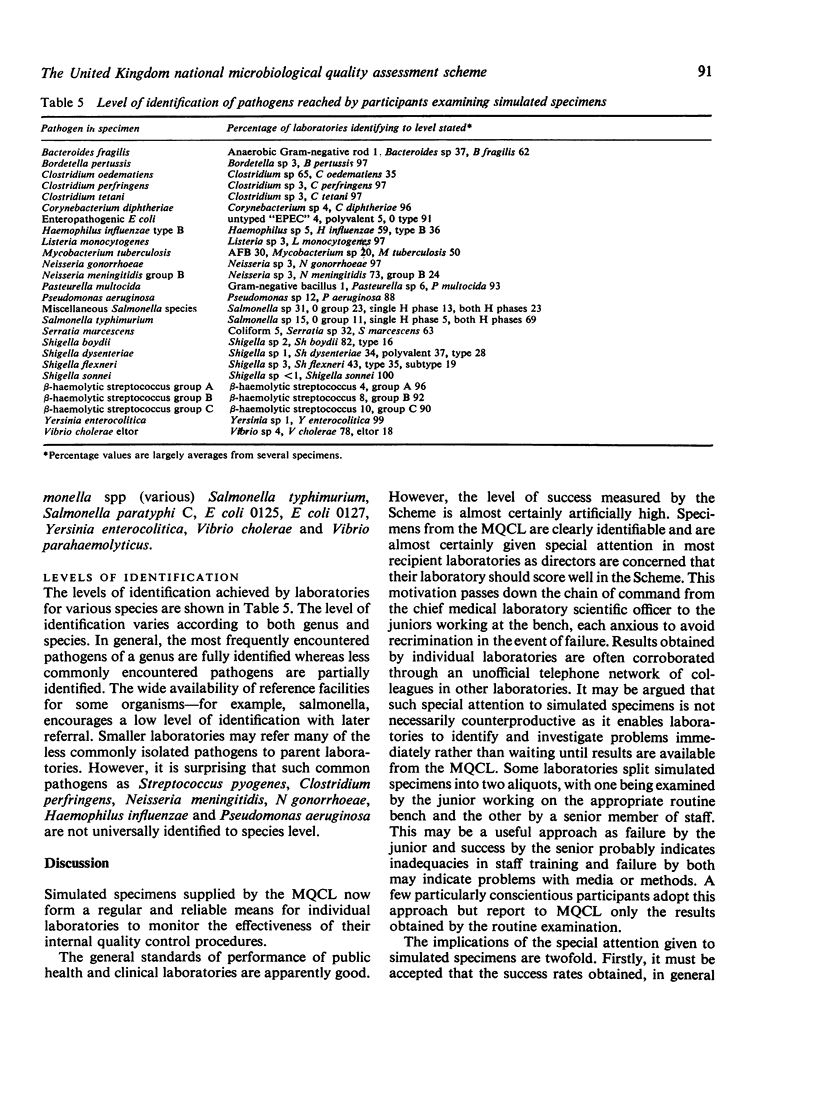
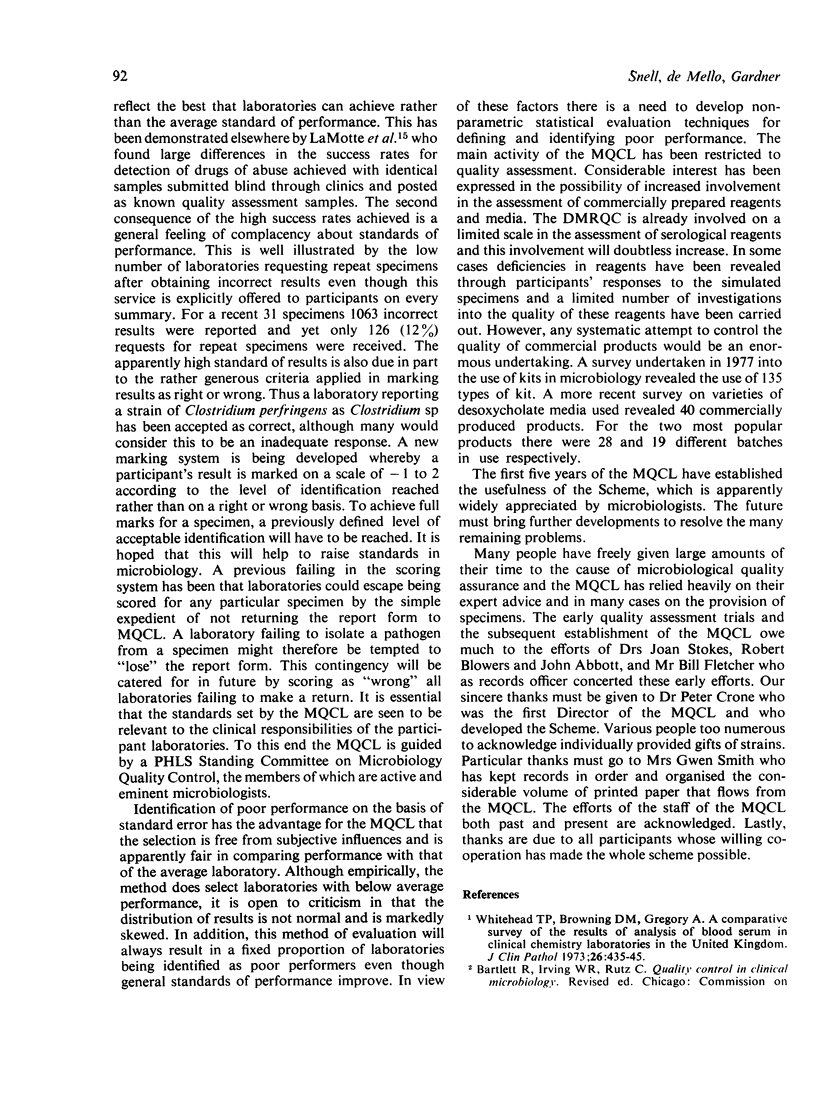
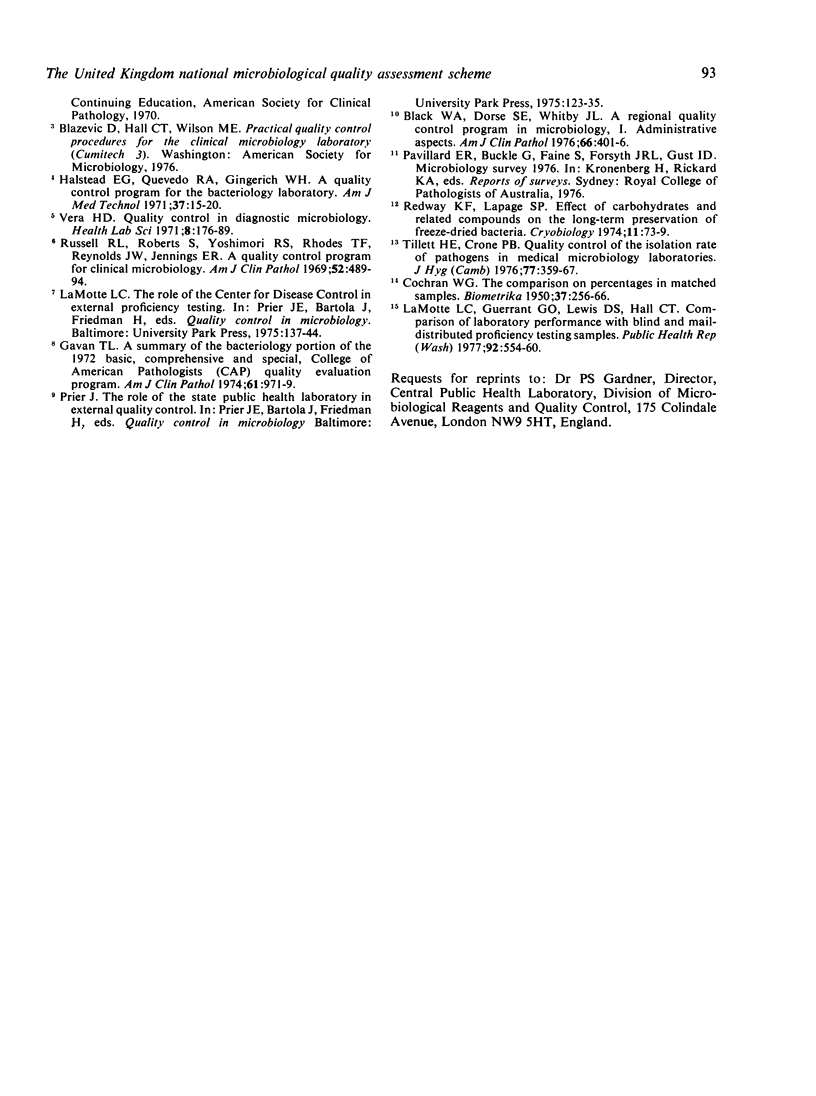
Selected References
These references are in PubMed. This may not be the complete list of references from this article.
- Black W. A., Dorse S. E., Whitby J. L. A regional quality control program in microbiology. I. Administrative aspects. Am J Clin Pathol. 1976 Aug;66(2):401–406. doi: 10.1093/ajcp/66.2.401. [DOI] [PubMed] [Google Scholar]
- COCHRAN W. G. The comparison of percentages in matched samples. Biometrika. 1950 Dec;37(3-4):256–266. [PubMed] [Google Scholar]
- Gavan T. L. A summary of the bacteriology portion of the 1972 basic, comprehensive, and special, College of American Pathologists (CAP) Quality Evaluation Program. Am J Clin Pathol. 1974 Jun;61(6):971–979. [PubMed] [Google Scholar]
- Halstead E. G., Jr, Quevedo R. A., Gingerich W. H. A quality control program for the bacteriology laboratory. Am J Med Technol. 1971 Jan;37(1):15–20. [PubMed] [Google Scholar]
- LaMotte L. C., Jr, Guerrant G. O., Lewis D. S., Hall C. T. Comparison of laboratory performance with blind and mail-distributed proficiency testing samples. Public Health Rep. 1977 Nov-Dec;92(6):554–560. [PMC free article] [PubMed] [Google Scholar]
- Redway K. F., Lapage S. P. Effect of carbohydrates and related compounds on the long-term preservation of freeze-dried bacteria. Cryobiology. 1974 Feb;11(1):73–79. doi: 10.1016/0011-2240(74)90040-6. [DOI] [PubMed] [Google Scholar]
- Tillett H. E., Crone P. B. Quality control of the isolation rate of pathogens in medical microbiology laboratories. J Hyg (Lond) 1976 Dec;77(3):359–367. doi: 10.1017/s002217240005573x. [DOI] [PMC free article] [PubMed] [Google Scholar]
- Vera H. D. Quality control in diagnostic microbiology. Health Lab Sci. 1971 Jul;8(3):176–189. [PubMed] [Google Scholar]
- Whitehead T. P., Browning D. M., Gregory A. A comparative survey of the results of analyses of blood serum in clinical chemistry laboratories in the United Kingdom. J Clin Pathol. 1973 Jun;26(6):435–445. doi: 10.1136/jcp.26.6.435. [DOI] [PMC free article] [PubMed] [Google Scholar]


